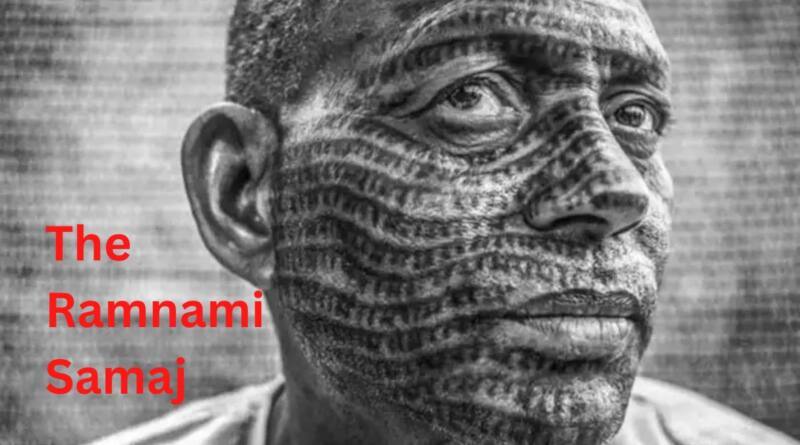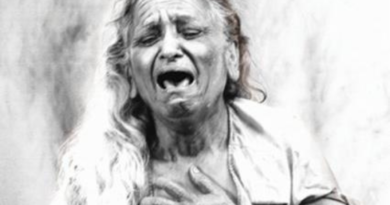The Revolutionary Ramnamis Tattoos It’s Way To Overcome Casteism In India.
“The Ramnami Samaj”
In the 1890’s, Parasuram founded the Ramnami Samaj, a Hindu sect that worships the God Ram. The Ramnamis live primarily in the state of Chhattisgarh, in India. They have the word “Ram” tattooed on their bodies and wear clothes with the name of Lord Ram printed on them. They also wear headgear made of peacock feathers. The population of the group is estimated to be between 20,000 and 100,000 people.
History
The founder of the Ramnami Samaj, Parasuram, the Chamar, was born in the 1870s at Charpora village and is presumed to be the very first person from the community to tattoo the word “Ram” on his forehead. After being denied entry to a temple due to his caste, Parasuram tattooed himself as an act of defiance. The majority of the Ramnami sect’s followers were Chamar, but later Brahmin, Banik, Kurmi, and others joined the movement. Ramdas Lamb, describes the ‘Ramanami’ sect as a resumption of the 15th-century Bhakti movement and an offshoot of the Satnampanth of the region.
The Ramnami Samaj has a long history of combating caste discrimination and social injustice. In the early 20th century, the sect’s leaders campaigned against the practice of untouchability and advocated for the rights of Dalits, the lowest social group in the Hindu caste system. The sect also played a role in the Indian independence movement.
The Ramnamis won a legal battle against high-caste Hindus in 1910 over the right to use the name Ram. The Ramnamis, known as the ‘tattooed followers’, were denied entry to temples until the 1980s. This was primarily because their tattoos revealed their true identities.
Demographics
Because Ramnamis are simply referred to as Hindus in official records, accurate demographic data is not available. However, it is estimated that their population would not be more than 20,000. This is speculated as per the number of people attending the annual Bhajan Mela. Otherwise, it is estimated to be more than 100,000. Ramnamis are primarily found in Chhattisgarh in the villages settled alongside the river Mahanadi, though some of them can also be found in the border regions of Maharashtra and Odisha.
Struggles and Discrimination
The Ramnami Samaj has been the target of caste violence and discrimination throughout its history. In the early 20th century, the sect was attacked by high-caste Hindus, who saw the sect’s practice of tattooing as a sign of disrespect for their caste. The sect was also attacked by the British colonial government, which saw the sect as a potential source of rebellion.
Despite the challenges it has faced, the Ramnami Samaj has continued to grow and thrive. In recent years, the sect has been working to increase its visibility and raise awareness of its struggles.
Practices
Adherents of the sect do not drink or smoke, chant the name of Ram every day; tattoo the word “Ram” on their bodies, and wear a shawl with the word “Ram” printed on it as well as peacock feather headgear. Those with full body tattoos are known as “purnanakshik” and are mostly in their seventies; younger generations of Ramnamis are not tattooed, fearing discrimination and being denied work because of the tattoos.
Every year at the end of the harvest season from December to January, Ramnamis gather in the village of Sarsiwa in Raipur district for a three-day Bhajan Mela. During this period, the Ramnamis chant from the religious book ‘Ramcharitmanas’ and erect a ‘jayostambh’, which is a white pillar with the name of Lord Ram inscribed on it.
The sect has been successful in attracting members from all castes, and its work is having a positive impact on the caste system in India. The sect is helping to break down the barriers between the different castes and is promoting education and economic development among its members.
Today, the Ramnami Samaj is a thriving community with a strong commitment to social justice. The Ramnami Samaj continues to work for the welfare of the Ramnami community and for the advancement of Dalit rights in India. It is an important voice in the fight against caste discrimination and exclusion.









You made some decent points there. I looked on the internet for the issue and found most guys will consent with your site.
Great amazing things here. I am very glad to look your post. Thank you a lot and i’m having a look ahead to contact you. Will you kindly drop me a mail?
After study a few of the blog posts on your website now, and I truly like your way of blogging. I bookmarked it to my bookmark website list and will be checking back soon. Pls check out my web site as well and let me know what you think.
Hello! I could have sworn I’ve been to this blog before but after browsing through some of the post I realized it’s new to me. Anyways, I’m definitely happy I found it and I’ll be book-marking and checking back frequently!
Spot on with this write-up, I really think this website needs much more consideration. I’ll most likely be again to read way more, thanks for that info.
Everything is very open and very clear explanation of issues. was truly information. Your website is very useful. Thanks for sharing.